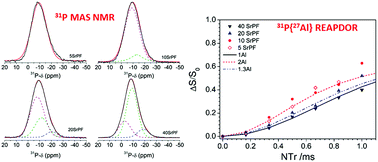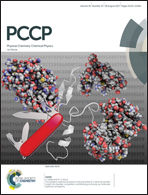Rare-earth doped fluoride phosphate glasses: structural foundations of their luminescence properties†
Abstract
We report a detailed structural investigation of a series of fluoride–phosphate glasses with different phosphate/fluoride ratios in the system xSr(PO3)2–(100 − x)[AlF3–CaF2–SrF2–MgF2] with x = 5, 10, 20, 40. Raman and multinuclear solid NMR spectroscopies confirm that the polyphosphate network structure is successively transformed to a structure dominated by Al–O–P linkages with increasing AlF3 content. Average numbers of Al–O–P linkages have been quantified by 27Al/31P NMR double-resonance techniques. The majority of the fluoride species are found in an alkaline earth metal/aluminum rich environment. The local environments for rare-earth ions have been characterized by EPR spectroscopy of Yb3+ ion spin probes and by photoluminescence experiments on Eu3+ dopant ions, including the 5D0 → 7F2 and 5D0 → 7F1 transition intensity ratio, the normalized phonon sideband intensities in the excitation spectra, and the lifetime of the 5D0 excited state. The results indicate clear correlations between these parameters as a function of composition, and confirm that even at the highest fluoride levels, there is still some residual rare-earth phosphate coordination.



 Please wait while we load your content...
Please wait while we load your content...